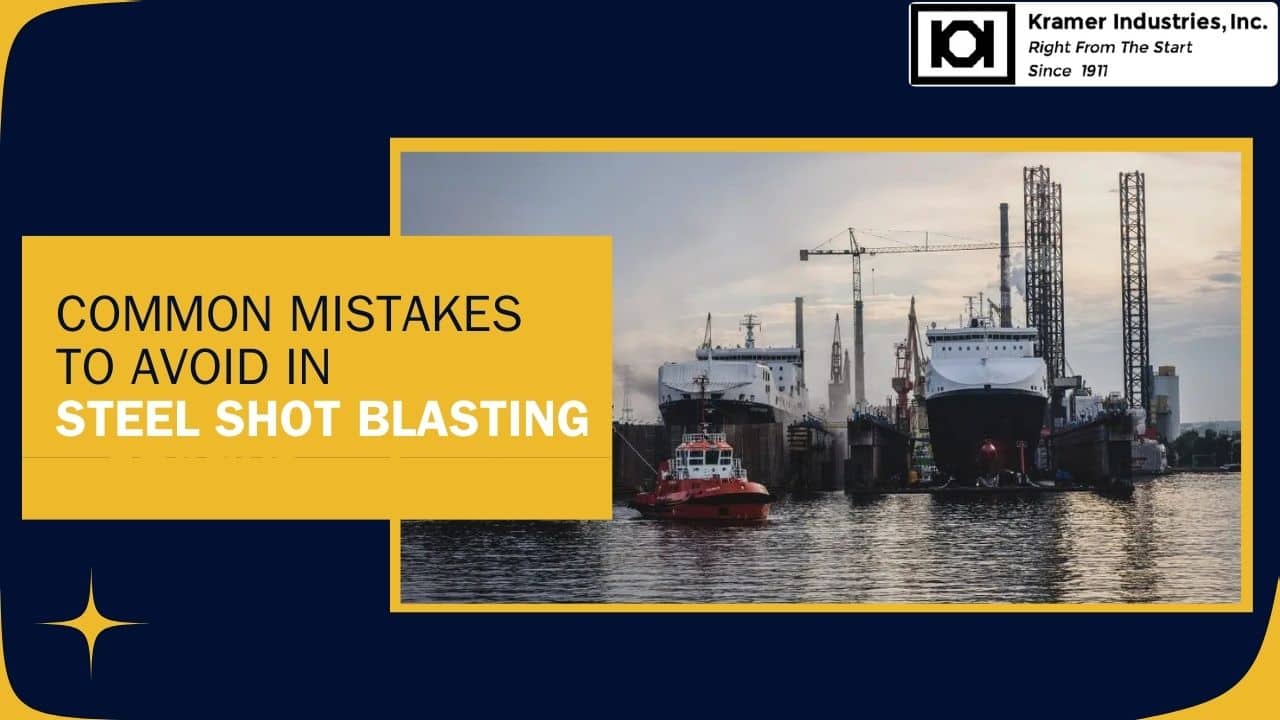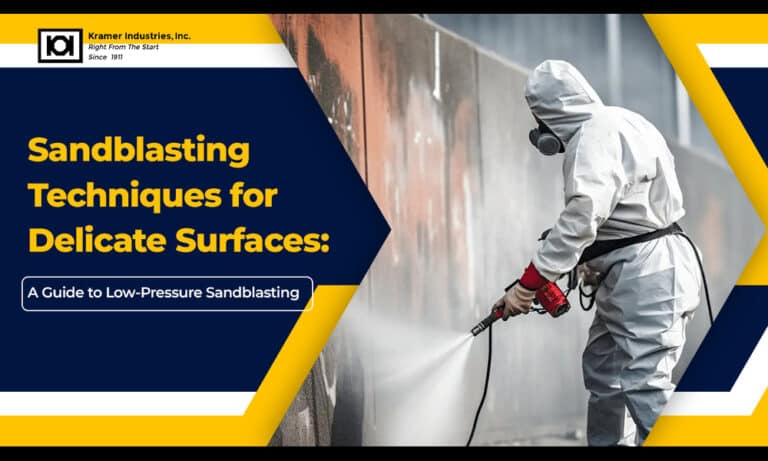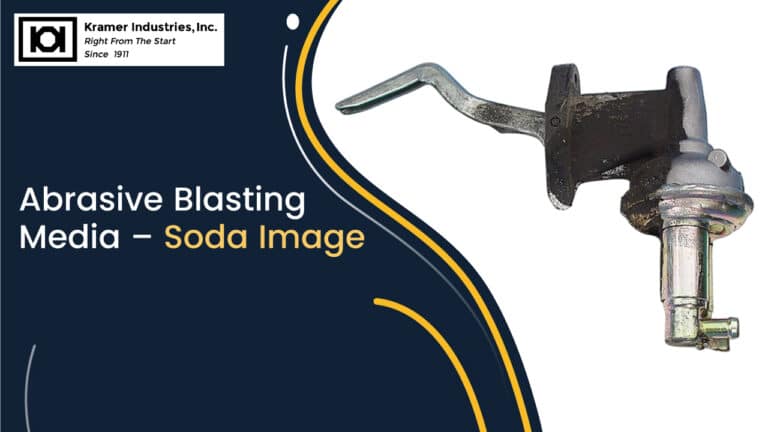Steel shot blasting may look like a straightforward process, where you blast, then clean, and this process repeats itself. But the truth is, it’s a science, and a balanced equilibrium between metal and machine. Done right, this method transforms dull, grimy surfaces into fresh, ready surfaces, all ready for coatings or finishes. Done wrong, it can waste money, damage surfaces, or even harm workers.
Here’s a look at the most common mistakes people make in steel shot blasting, why they happen, and how to dodge them. Think of this as your “don’t-do list” for shot blasting.
-
Ignoring Safety and Health
One of the greatest errors in blasting is treating safety like an afterthought. Steel shot blasting involves hurtling tiny steel shots at quite high speeds on a surface. The risks may include dust clouds, flying debris, and ear-splitting noise. Besides, there is an occasional ricochet that you should look out for. Ignore this, and you expose yourself to accidents that could lead to injuries and increased costs.
The solution is simple but often skipped. Always wear proper PPE. Operators should be protected with helmets, gloves, goggles, respirators, and hearing protection. Establish isolation zones so non-operators to keep the area safe. Ventilation is necessary, especially in tight areas. Blasting without these precautions is dangerous and shortsighted.
-
Choosing the Wrong Abrasive or Method
Every blasting job has its way of being done. Some surfaces demand aggressive cleaning. Others need gentle treatment. It is wrong to assume that steel shot blasting is always the best option and that picking the wrong shot size does not matter.
The wrong abrasive can gouge a surface and leave stubborn coatings as is. It could also eat up more time and budget than expected. Instead of diving in blindly, consider three factors:
- What surface are you working on?
- What finish do you need?
- How much time and money do you want to spend?
Though steel shot blasting is powerful, it cannot be used for all blasting procedures. To avoid going down the wrong path, you have to match the media and method to the material.
3: Poor Nozzle Distance in Steel Shot Blasting
Many beginners overlook this detail. They do not study the distance between the nozzle and the surface. When you hold the nozzle too close, you risk over-blasting. There could be uneven cleaning and even punching holes in softer materials. Hold it too far, and you waste time and shot, leaving patchy, half-clean areas.
Maintaining the exact distance takes practice. Each blasting system has its rhythm, and every operator needs to pick it up. When nozzle distance is off, the surface shows it—uneven textures, wasted media, and sometimes dangerous ricochets.
The best prevention is to train and practice. When possible, rely on equipment with built-in distance controls. That small adjustment can save quite a lot of rework.
-
Working in Poorly Ventilated Spaces
Steel shot blasting generates quite some dust, debris, and clouds. When doing it in a closed or poorly ventilated area, it gets dangerous fast.
Operators often underestimate how much dust blasting creates. This is especially so under ships, inside tanks, or in other confined spaces. Hence, this process has to be done with ventilation fans, extractors, and proper dust collection systems, all in the right place. If any compromises are made, there is much to be lost. Workers can lose visibility, breathe in harmful particles, or even suffocate.
Hence, never blast in a closed space without ventilation. Always use respirators, helmets with air supply, and fans to keep the area safe. Evacuation plans and easily available first aid stations should be in place.
5: Overlooking the Environmental Impact of Steel Shot Blasting
Blasting doesn’t just affect the surface in front of you. Too many operators forget that wasted shot, dust, and residue are natural byproducts of this process. They could pile up, wash away, or contaminate nearby spaces.
Steel shot blasting is much more eco-friendly than one-time-use abrasives like sand. However, if the spent media is collected and recycled, its role as a nature-friendly media is enhanced much more. Skipping cleanup or using non-recyclable abrasives can turn blasting into a hazard for nature and double the costs involved.
Always keep a disposal and recycling plan ready. They should involve containment systems and collection hoppers. Smart recovery processes keep blasting efficient and friendly to the environment.
Other Mistakes Worth Noting
- Skipping maintenance: Neglecting equipment checks often leads to clogged nozzles, unsatisfactory results, and costly downtime.
- Ignoring operator training: Blasting may look simple, but if your operators are inexperienced, do not be surprised to see waste media and damage surfaces often.
- Rushing the process: Faster isn’t always better. Have control over the speed. Pushing too hard can harm both the surface and the machinery..
Steel shot blasting thrives on precision. Small mistakes snowball into costly failures if ignored.
Conclusion
Steel shot blasting is one of the most effective methods for cleaning and preparing metal surfaces, but it’s also a process filled with potential pitfalls. Ignoring safety, using the wrong abrasive, holding the nozzle at the wrong distance, blasting in tight, unventilated areas, and forgetting the environment are the most common traps.
Avoiding them might seem complicated, but with awareness, discipline, and the right tools, it is easy to achieve. Respect the process, and it will reward you with clean, strong, and perfectly prepared surfaces.
At Kramer Industries, we understand the art and science behind blasting. Our steel shot media and blasting equipment are built with performance, safety, and sustainability in mind. From tackling rust removal and surface finishing to heavy-duty prep, our solutions help you avoid mistakes. They get the job done right the first time. Explore Kramer’s range of steel shot blasting products today and give your surfaces the professional touch they deserve.




